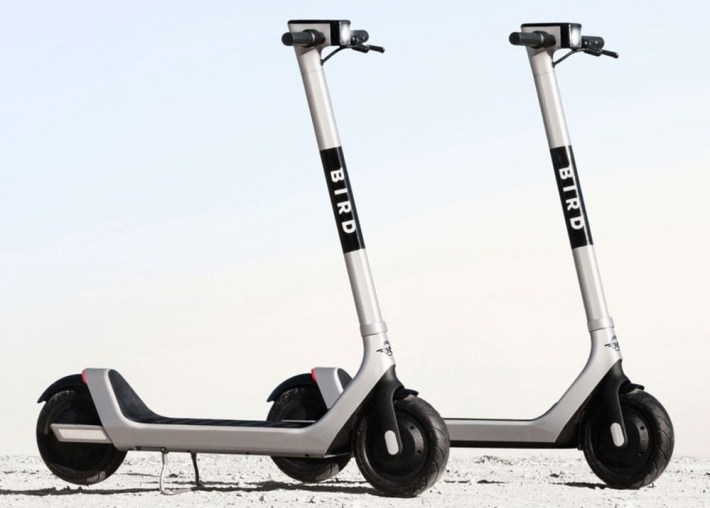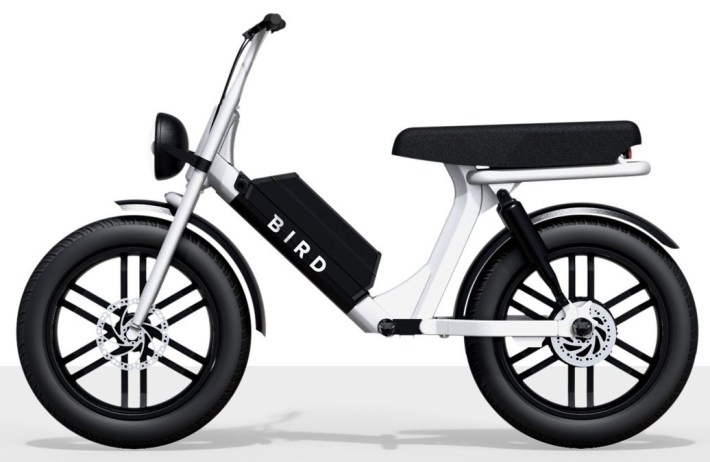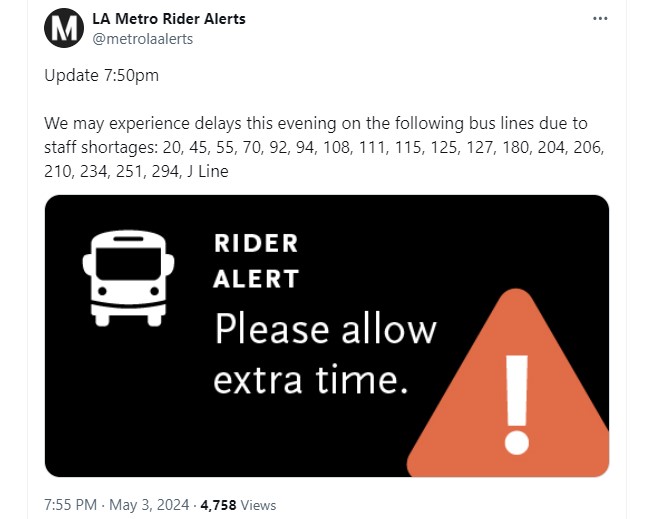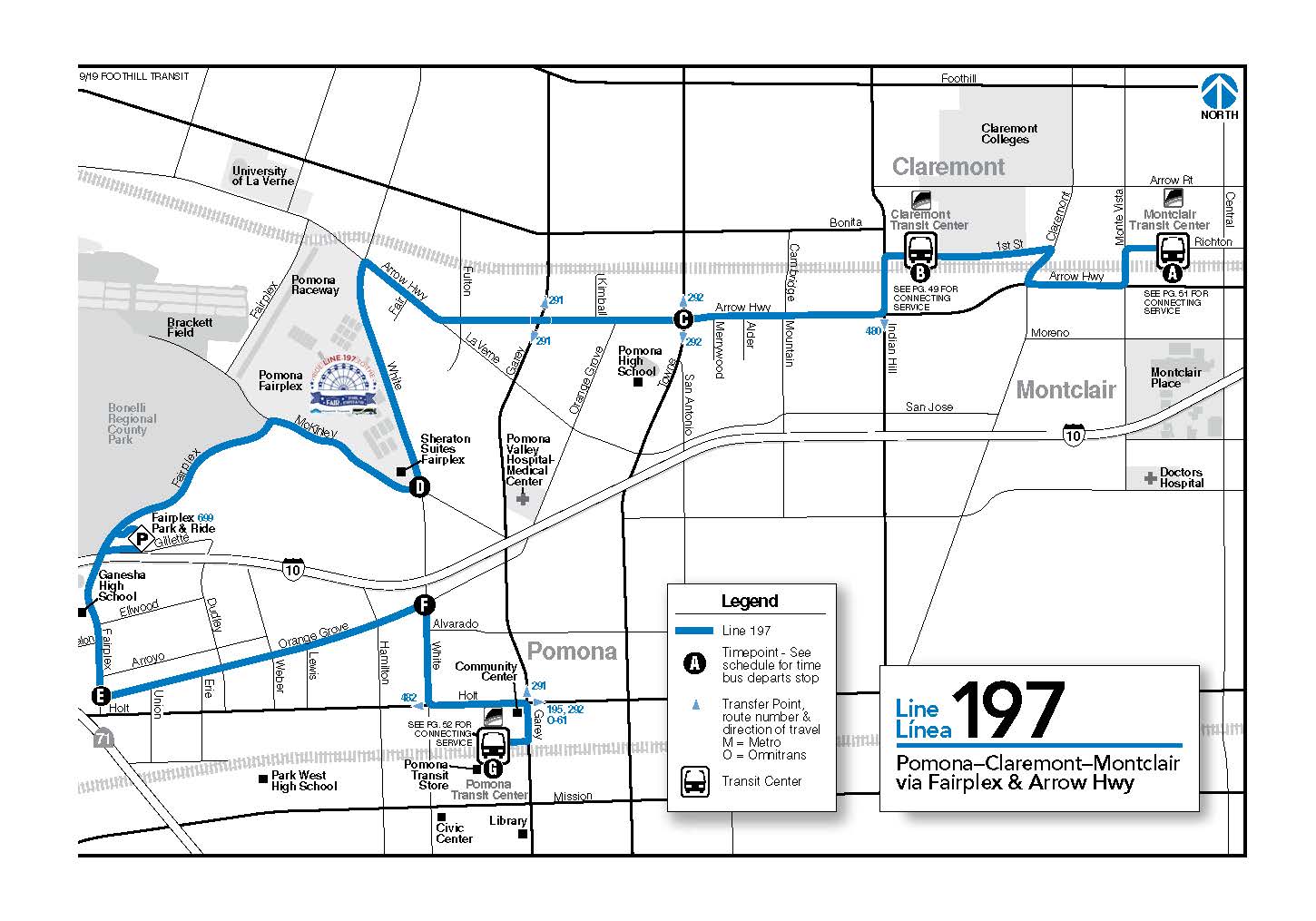Interview with Melinda Hanson, Bird’s Sustainability Chief
12:26 PM PDT on August 22, 2019
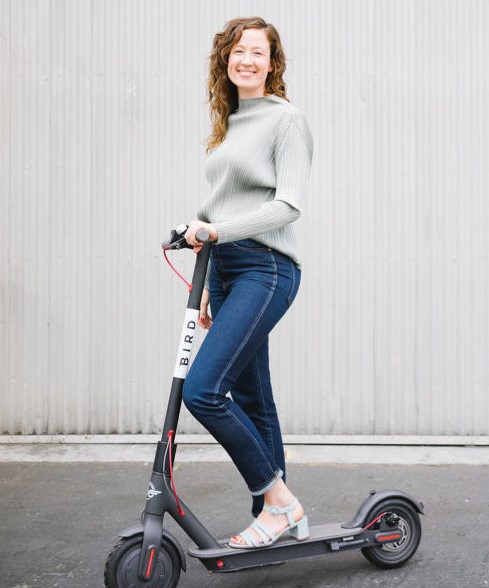
Melinda Hanson, photo courtesy of Bird
Streetsblog recently met up with Melinda Hanson, the head of sustainability for Bird. The interview took place in Santa Monica last week, and has been edited for readability.
SBLA: Tell readers about your background and what you do at Bird.
Melinda Hanson: My background is all in climate policy, street design, and sustainable transportation.
I started my career helping to launch the ClimateWorks Foundation, where I ran the sustainable transport portfolio, funding projects primarily in low- and middle-income countries - to expand BRT, bike infrastructure, and pedestrian infrastructure - in the name of decarbonizing urban transportation.
Right before joining Bird, I was deputy director of NACTO's Global Designing Cities Initiative, overseeing their international programs. I was overseeing our strategy and our communications, [and] also our design work in Addis Ababa, Ethiopia. It’s a city with 90% pedestrian mode share at this point. Only 4% car ownership. It already has extreme traffic congestion issues, so I was working with the city to develop a longer term plan for how they intend to build the type of transport infrastructure to encourage sustainable modes over the car-oriented travel that has dominated and ruined so many cities in the world.
At Bird, I head up sustainability. What that means is first understanding what role light electric vehicles - and e-scooters specifically - play in encouraging mode shift and decarbonizing cities more broadly.
And then on the other side, understanding what our environmental impact is - and working with the various teams across the company to find ways to reduce our impact as much as possible.
Talk a bit about the big picture - why scooters? why Bird? In terms of climate, the environment, what’s the benefit?
The reason that I came over to Bird is that I was very frustrated at the pace of change on these street design projects. The number of projects I worked on versus the number of - well, we’ll say that my success record was not very high.
There were a lot of plans and not a lot of action.
We have that in L.A.
Yeah. You’re working on all these plans and the IPCC is coming out with all these reports that say we have ten years to take real action on climate change. It was very frustrating at times.
Then I saw these scooters start popping up. At first I was very skeptical of them because I’m a cyclist myself. I really thought that the bicycle would be the thing to really get people out of cars in the U.S.
I was seeing how popular the scooters were, and some of the mode-shift numbers, ridership numbers. At NACTO we were tracking the number of scooter rides versus bike-share, the pace of uptake, demographic-related characteristics — just the enthusiasm and the popularity of e-scooters was very exciting to see. We know that a big part of the climate puzzle is getting people to choose other modes - other than cars - that are more sustainable, more efficient modes. The e-scooter is very much that.
The National Household Travel Survey indicates that 40% of all car trips in the U.S. are under three miles. That’s someone in a 4,000-pound tin box, driving around for very, very short trips that they certainly don’t need to be using all that energy for. So when you look at the potential for trip replacement and the popularity, that’s very exciting from a climate perspective.
Sometimes when you hear these projections for the future of electric vehicles - and you think about all of the infrastructure investment and all the additional electricity capacity - it’s just like: we don’t have time guys. People love scooters - and they’re a solution available today. This is working really well and it’ll work even better if we can speed up the implementation of infrastructure.
What we know about climate change - and about the pace of action - is we need radical solutions and we need them now. We need a fundamental paradigm shift. The same kind of thinking that’s gotten us into this mess is not going to get us out.
The real solution is what it’s always been - getting people on modes that are significantly more efficient. And creating just the spaces for them. Obviously there are so many sustainability benefits from that - but also lots of safety benefits, quality of life benefits that come from these types of investments and priorities.
Talk about what sustainability initiatives you’re working on.
We consider ourselves a sustainability company. We are already getting people out of cars, but we also want to continue to push ourselves, to hold ourselves to a very high standard. We want to be the best and most sustainable transportation company.
Part of that means we’re doing a life cycle assessment right now. The point is to baseline where everything stands and to set targets and goals for our longer term sustainability. This is to ensure that we continue to innovate and continue to make sure we’re providing a great product that lasts a really long time and that people really want to take. That they want to choose over a car for as much as possible. Life cycle assessment is a really big piece of that.
The life cycle assessment and associated sustainability strategy are really the two most exciting things for me right now. Those really span the entire organization, so it’s a lot of fun to get to work with the different departments.
There have been some reports, including an L.A. Times story recently about a study saying scooters aren’t all that green - just get back in your car. What’s your response to that study?
It is very obvious, if you look at the efficiency. Compare an electric scooter - a small electric scooter that weighs 40 pounds - to a car. In terms of the amount of energy required to move a person, there’s no doubt about it. The electric scooter is more sustainable.
The researchers, out of North Carolina, did not talk to any of the companies and their analysis is built on a lot of assumptions. They defined a certain set of scenarios based on a variety of assumptions that don’t reflect Bird’s practices or Bird’s vehicles at this point.
What we can agree on from that study is the need for encouraging car trip replacement. The more of these electric scooter trips that replace car trips, the better it is, right?
Bird is already seeing that one third to one half of our scooter trips are replacing car trips. That’s a really really crucial piece of this conversation about how green scooters are.
The other piece is making sure that the vehicles last a really long time - which is also completely in line with our business interests. These things need to be built to last. They need to be durable. We’ve invested a lot of resources in making sure they are that way. The Bird Two is an awesome representation of that. It’s incredibly sturdy. We expect this vehicle to last a long time.
Describe the Bird Two scooter you mentioned.
In the very early days, Bird’s shared scooters were consumer models. Those ones didn’t last long enough. It depends on a lot of different factors, but it was about three to four months on the consumer models. The reason is that those are not built for the frequency of use. They are not built to be used multiple times a day, left out in the sun, the weather, and the elements.
Starting with Bird Zero we had our own custom design. We have a pretty large vehicle R & D team that looks at all the different design elements of the vehicle and custom designs each part.
Bird Two has been our baby. It’s been in the works for quite a while. It has a reinforced frame. They made some design changes to the neck of the vehicle. The material is heavier and sturdier and reinforced in certain points. There are no exposed screws anywhere - to help address tampering issues. The battery lasts longer and has the first of its kind battery management system.
It’s a very very sophisticated vehicle - all across the board.
What about Bird’s new two-wheel moped-thing - what’s it called?
Cruiser. It’s like a banana bike cruiser meets a moped.
It’s pretty amazing. It’s a very unique vehicle type.
It’s a sit-down model. We have it adaptable - some will have pedals. Depending on what the city wants, some of them will have pedals. Others will just have pegs and be fully electrified. The benefits of it are that for certain trips somebody may prefer to sit, or feel more comfortable sitting, so you can actually sit on it just like a bicycle.
You can put two passengers on it. If you’re going out with a friend, it’s really easy to just pop them on the back.
People are doing that on scooters today.
We discourage that.
It’s against the terms and conditions.
It very much is.
What sort of changes might Bird users expect in the near future?
We’re constantly working to refine our app, and refine the rider experience, and refine the vehicles.
Also we’re focused on something crucial that takes a little bit longer: partnering with cities for infrastructure changes.
We’re doing a lot of data-sharing - with [LADOT General Manager] Seleta Reynolds and the MDS standard right now. They’re intending to use that information to build additional bike lanes.
We hope that riders in L.A. will see is what we’ve seen in Santa Monica. Since the introduction of micro-mobility here, the city has invested heavily in infrastructure. Green lanes are everywhere. Santa Monica did a survey that showed 50% of all electric scooter trips would have otherwise been car trips.
It’s not just what you see from us, but what you’ll see from successful partnerships with cities: a better, more comfortable ride. This hopefully helps with ensuring you can trust scooters for your first/last mile connection to transit. Ensuring that the balance of scooters is robust enough that you can find one any time you want, and that you have places to ride them that are safe and protected from the dangers of cars.
The complaint we hear a lot is about e-scooters blocking sidewalks. Cars, of course, do this and it is a double standard. But there are folks in wheelchairs, or with other disabilities, who encounter a scooter that’s difficult to get around. What’s Bird working on to address this issue?
The nice thing is that a lot of the issues people have right now, including that one on accessibility, is that they’re solvable. We’re already seeing improvements on them.
One of the reasons we’re seeing this issue - is because a lot of e-scooter riders were not bicyclists. For a lot of people, this is their very first time being on a street on two wheels. They just don’t really know the etiquette and the proper way to do it.
So we work really hard to educate riders on where to park and to be thoughtful of everyone in the community, and support from cities really helps with this endeavor. For example, in the city of Santa Monica they’ve been taking parking spaces and adding some decals to show where to place the scooter. That’s the perfect solution.
We shouldn’t be pitting scooterists and cyclists against the pedestrians at all. We should be reclaiming our streets and creating spaces for shared micro-modes and modes that are much more equitable, much more efficient, and much more sustainable.
From a product perspective, we’re piloting a few different things to encourage - to nudge - better behaviors. In particularly dense areas - in Paris for example - we’re working right now to assign some designated parking spaces. We incentivize riders to park in those locations.
I think through a combination of education, people getting more familiar with this mode, and cities investing in space for scooters - we’ll get to a place where it’s no longer an issue.
Another critique that people bring up - and another car double-standard - is that e-scooters are dangerous. Are scooters dangerous? What is Bird doing in that realm?
Scooters are not dangerous. Our streets are dangerous. The fact that we’ve built our streets just for cars, and only to prioritize car movement above all else - is really what the challenge is.
Obviously the number of car crash fatalities is abysmal - 40,000 [annually] in the U.S. alone. It’s an epidemic that needs to be addressed and it can be addressed with street design.
What we see from our research is that electric scooters are no more dangerous than bicycles. We also see that the incidence of any injury or safety concerns - are significantly lower in Europe. That’s really no surprise. You have slower speeds, traffic calming features. You have better bike lane infrastructure. You have people more familiar - not only drivers but riders - more familiar with navigating the streets on two wheels.
I think this is again something that really requires the partnership - between micro-mobility companies and cyclists and pedestrians and cities - to re-allocate our street space - because it’s the design of the street that’s the biggest safety concern.
How about equity? We see lots of e-scooters in richer Westside neighborhoods, not so many in communities of color, South Los Angeles.
I do know that we work really closely with cities. They set a lot of different requirements for us for the provision of vehicles in historically underserved areas. We abide by those rules and permit requirements - and place vehicles in the neighborhoods that we’ve agreed to.
We also offer different programs to provide discounted rides and memberships to anybody on government service. There’s a whole suite of different options that we do.
Some initial research in some of those programs is compelling and shows how much more we need to work with cities to find the best way to do this. We’re being asked to provide transportation in areas that the cities have been unable to provide transit to. So we see what we’re offering as a big benefit in that way - but also see a need to do additional partnerships - to understand what kind of program is going to work well to achieve the goals of the city, but also make sure that we can operate an economically-sustainable business.
This is typically our last question: if you could wave a magic wand to change transportation and cities overnight, what would you change?
We need to reclaim our streets. I think we need to completely re-think the way we allocate our street space. It should be allocated based first on people-moving efficiency - which modes that are moving the most people per hour - which we know are transit and micro-modes.
We should provide safe, protected, connected places for people to take more sustainable modes. You shouldn’t have to fight for your life to commute on a bike or a Bird, which is what we’re seeing in too many different places.
In transportation it’s very much a case of “if you build it, they will come,” and we’ve seen this demonstrated all around the world. If we build the proper infrastructure, I’m sure we’ll see an increase in ridership of environmentally-friendlier alternatives to cars.
Stay in touch
Sign up for our free newsletter
More from Streetsblog Los Angeles
This Week In Livable Streets
Bike Month continues, Metro 91 Freeway widening, Destination Crenshaw, Culver City Bus, Santa Monica MANGo, Metro bike lockers, Metro Sepulveda Transit, and more
San Fernando Valley Bus/Bike Updates: G Line, Roscoe Bus Lanes, Laurel Canyon Bike Lanes
Short newly protected bike lane on Laurel Canyon Blvd, extensive NSFV bus improvements under construction this month, and scaled-back G Line plans should get that project under construction this summer
No, L.A. City Does Not Always Add Required ADA Ramps During Resurfacing, But They Should
StreetsLA GM Keith Mozee "Any time we do street resurfacing, it is considered an alteration, which requires ADA ramps to be installed."
